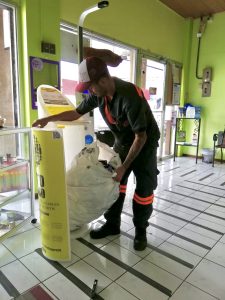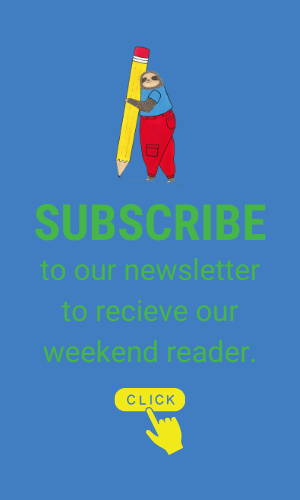We all know that we can and should take care when disposing of recyclable materials such as cardboard, paper, glass, and certain plastics—or hazardous materials, such as batteries. However, medications often end up in landfills.
Part of the mission of Punto Seguro, one of the partners of our edition “Recycling closes the circle,” is to change this practice and raise awareness in our country about how to dispose of medicines and recycle their packaging. That effort can have a great positive impact on the environment and public health.
To learn more, we turned to Gustavo Sáenz García, a pharmacist and founding partner of Punto Seguro Costa Rica, the only company in the region dedicated to pharmaceutical environmental services. Excerpts follow.
How important is the responsible management of the medications that we are going to throw away? What is the environmental impact if we don’t do it?
Costa Ricans accessed more than 92.5 million pharmacological treatments in 2022 through the Social Security System (Caja), according to the 2022 Health Statistics Report.
The amount of water on our planet is limited. It is well known that of 100% of the water on the planet, only 1% is fresh water, 2% is water in the form of ice, and 97% is salt water. Of that three percent made up by fresh water and ice, 30% is located in the subsoil and aquifers, and 0.3% is in lakes, rivers and swamps. It is from this 0.3% that water is taken for crop irrigation (70%), for industry (20%) and for human consumption (10%). Thus, humans use 0.0003% of all the water on the planet for their consumption, according to the Virtual Water Information Center, 2017.
Research carried out by the Technological Institute of Costa Rica, the University of Costa Rica (UCR), and the Universidad Nacional (UNA, and presented in October 2023 at the UCR’s Situation of Water Quality Symposium, produced compelling results. The analysis of water samples from various origins—water treatment plants, wastewater from a national hospital, and river surface waters surrounding the metropolitan area—demonstrate the presence of active pharmaceutical ingredients (PAF) in risky quantities. The assets present included Lovastatin (to control cholesterol levels), Ibuprofen (an anti-inflammatory and analgesic), Norfloxacin (an antibiotic), Diphenhydramine (an antiallergic), Gemfibrozil (for control of triglycerides), Acetaminophen (an analgesic), Ciprofloxacin (an antibiotic), and Doxycycline (an antibiotic).
Worldwide, abundant evidence that reflects water pollution by pharmaceutical substances. A 2012 document from the World Health Organization, “Pharmaceuticals in Drinking Water,” expressed concerns about the presence of active substances of medicines in wastewater; the risk to human health when they are present in drinking water; technologies that can remove these medicines from the water; and actions that help prevent the presence of these active substances in drinking water.
One of the most complete investigations that brings together global information was carried out by the University of York in the United Kingdom. Its results were deeply alarming and included data collected in Costa Rica. This study (Wilkinson & et al, 2022) analyzed more than 1,000 river water samples from 104 countries on all continents. Some of the most relevant findings for Costa Rica include the fact that the cumulative concentration (ng/L) of PAF placed San José within the 90th percentile of 137 samples that were analyzed, ranked 9th from the top in terms of concentration.
The concentration of PAF was higher in lower-middle-income countries. The authors say this could be linked to the low development of infrastructure for water treatment, which favors the possibility of interaction between PAF and the living beings found there. in the aquatic environment.
Factors that lead to water and soil pollution generally include inadequate waste disposal, as shown in the following image.

Source: Boxall, A.et al. Pharmaceuticals and Personal Care Products in the Environment: ¿What Are the Big Questions? Environ Health Perspect. 2012 Sep; 120(9): 1221–1229.
What does all this mean for health?
The 127 authors of the York University study found that the pollution of the world’s rivers poses a risk to both aquatic ecology and antimicrobial selection, and furthermore, it could be a risk for achieving Sustainable Development Goal 6.3 for 2030. This goal aims to “achieve universal and equitable access to drinking water and adequate sanitation and hygiene services, as well as improve water quality globally.”
This pollution affects aquatic flora and fauna, present in rivers and seas. The effect of the concentration of pharmaceutical and personal care substances in the waters in which aquatic fauna lives is variable and has been determined in terms of acute or chronic effect but also on biochemical, cellular, physiological, and behavioral levels.
Evidence shows that inadequate disposal of medications and the resulting presence of PAF in aquatic and land ecosystems favors antimicrobial resistance.
Likewise, discarding packaging materials and medicines through the traditional disposal route exposes us to the promotion of counterfeiting, a reality confirmed by the World Health Organization and the International Police INTERPOL. The United Nations Office on Drugs and Crime in 2014 estimated that approximately 30% of all medicines sold in Asia, Africa and Latin America are counterfeit. Globally, the WHO estimated in 2024 that 10% of all medicines are counterfeit.
What has been done in Costa Rica at the public policy level to address this problem?
In 2010, the Comprehensive Waste Management Law was passed. Its regulations govern the final disposal of medicines, raw materials, and quality control waste. The Ministry of Health called on pharmaceutical establishments to implement procedures authorized by the professional responsible for the establishment for the final disposal of these supplies.
However, although these regulations say that users can return medications to their manufacturer, it doesn’t specify how they should go about doing this. Therefore, marketers, health professionals and users are unaware of the environmentally responsible way to discard this waste.

So what do we do?
Post-consumption medication programs (PPCM) are organizations that seek to meet this need. According to the Ibero-American Network of Postconsumer Programs, these are initiatives that direct their efforts to providing services for the collection, transportation, treatment, and final disposal of unusable medicines and their post-consumer waste.
Their origins and organizational structures can range widely, depending on the conditions of each country. Some are created as nonprofit foundations and receive their financing from the pharmaceutical industry itself, so that through their operation they comply with the established regulations on extended producer responsibility. Others are developed as part of the responsibility of large pharmacy chains that develop mechanisms to help their clients find options to properly dispose of this type of waste.
In Europe, all efforts have been concentrated through a campaign called MEDSDISPOSAL that brings together organizations such as those described above, and others promoted by municipal and other public and private efforts.
In Costa Rica, there has been a PPCM since 2018 called Punto Seguro, which offers private collection services for unusable medications and their waste to end users in pharmacies, clinics, hospitals, municipalities, and other organizations that have seen value in offering this service. The organization published the results of its efforts in its Waste Characterization Report 2019-2022.
What impact has Punto Seguro noticed in Costa Rica?
Some interesting findings from this report indicate that of the 2,085.4 kg of waste collected, 63.92% came from the Caja, 22.80% came from private source, and 13.27% came from private medical samples. Of all of these, 59.56% were expired, and 40.03% were out of use.
Some of the PAF with the highest frequency among the collected waste were acetaminophen; supplements such as folic acid, calcium, and iron; hypertension medications such as hydrochlorothiazide and floxetian; anticonvulsants; and anti-allergy medications.
These results reflect behavior regarding the use of medications that must be taken into account by health authorities, since the great effort to provide resources and sustain an exemplary health system like that of Costa Rica cannot lose sight of the fact that compliance with pharmacological treatments has a direct impact on the quality of life and health care of the country’s inhabitants.
In other words: The increasing amount of medications discarded through Punto Seguro suggests widespread non-compliance with the treatments prescribed by health professionals who seek to support the objectives of healing, or to maintain the health conditions of the people who are treated in health services.
This, in turn, reflects an accumulation of wasted resources: medications thrown away, wasted salaries of professionals who participated in the chain of health care events, and the administrative costs of the operation of health facilities that do not achieve the objectives that have been laid out them.
The opportunity here is for health authorities to learn about the treatment compliance behavior that is reflected through the results obtained by Post-Medication Consumption Programs, and act to modify this treatment adherence behavior.
What should I do at home when I want to get rid of a medication?
Find a Punto Seguro near you on our webpage.






